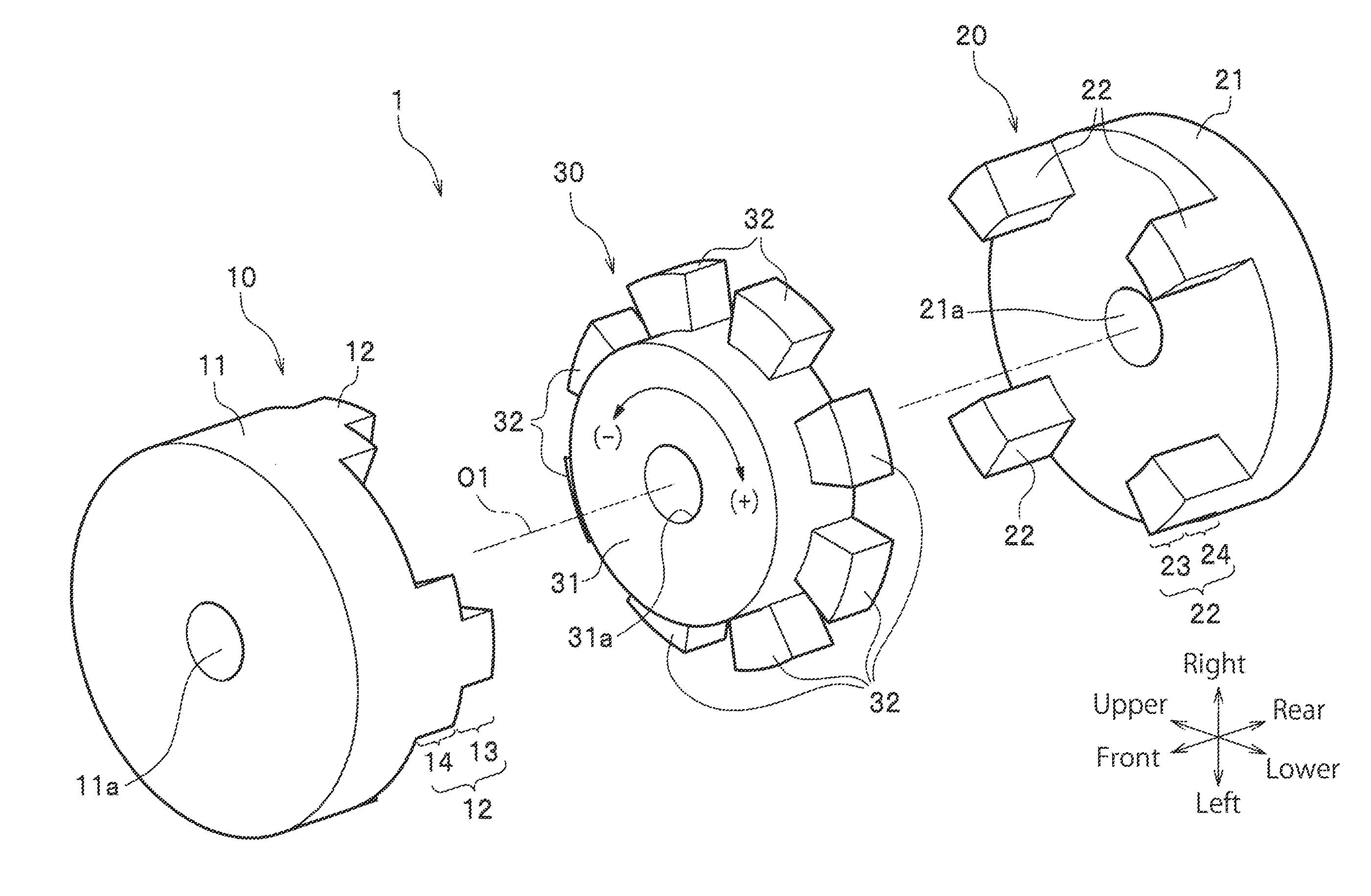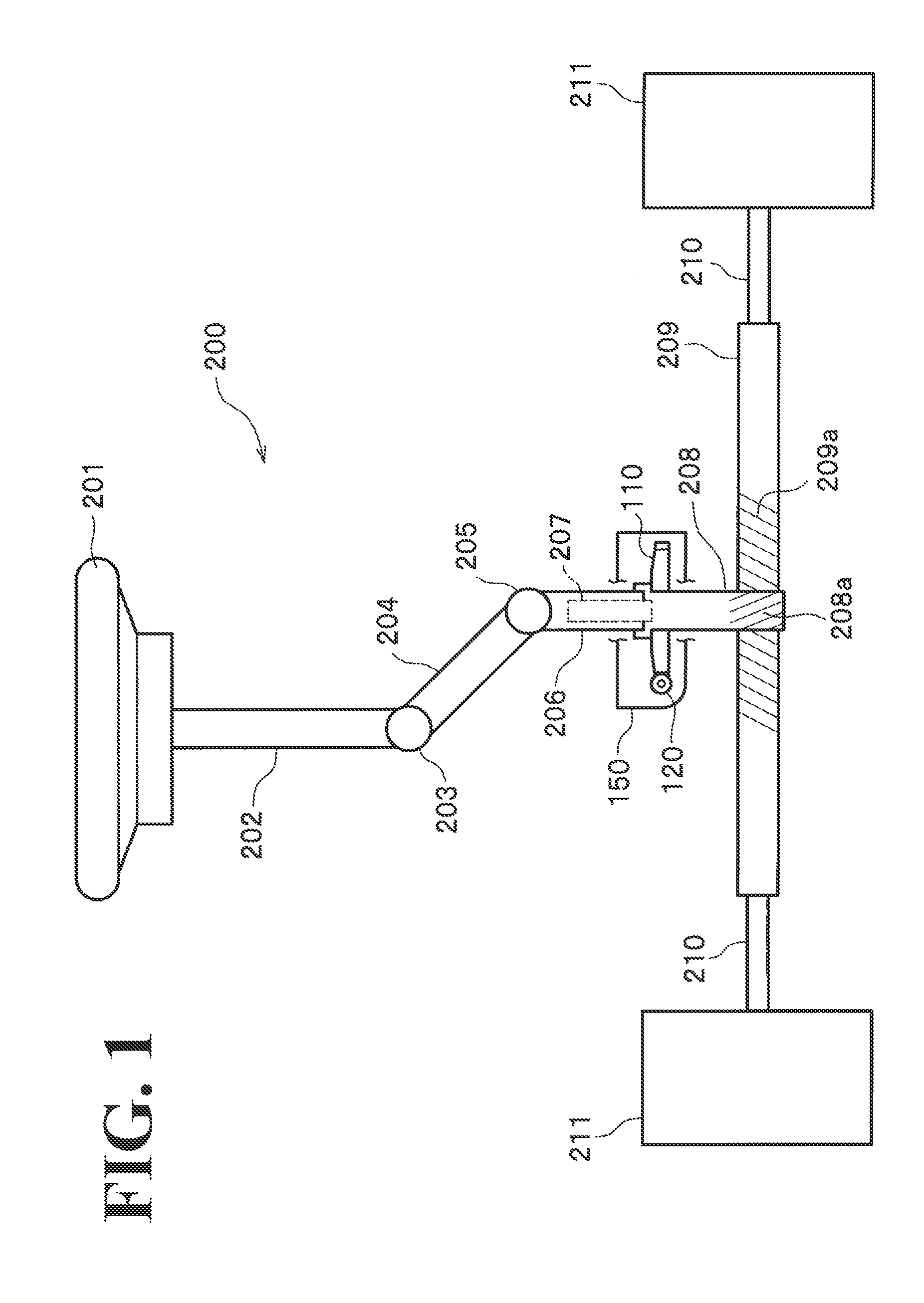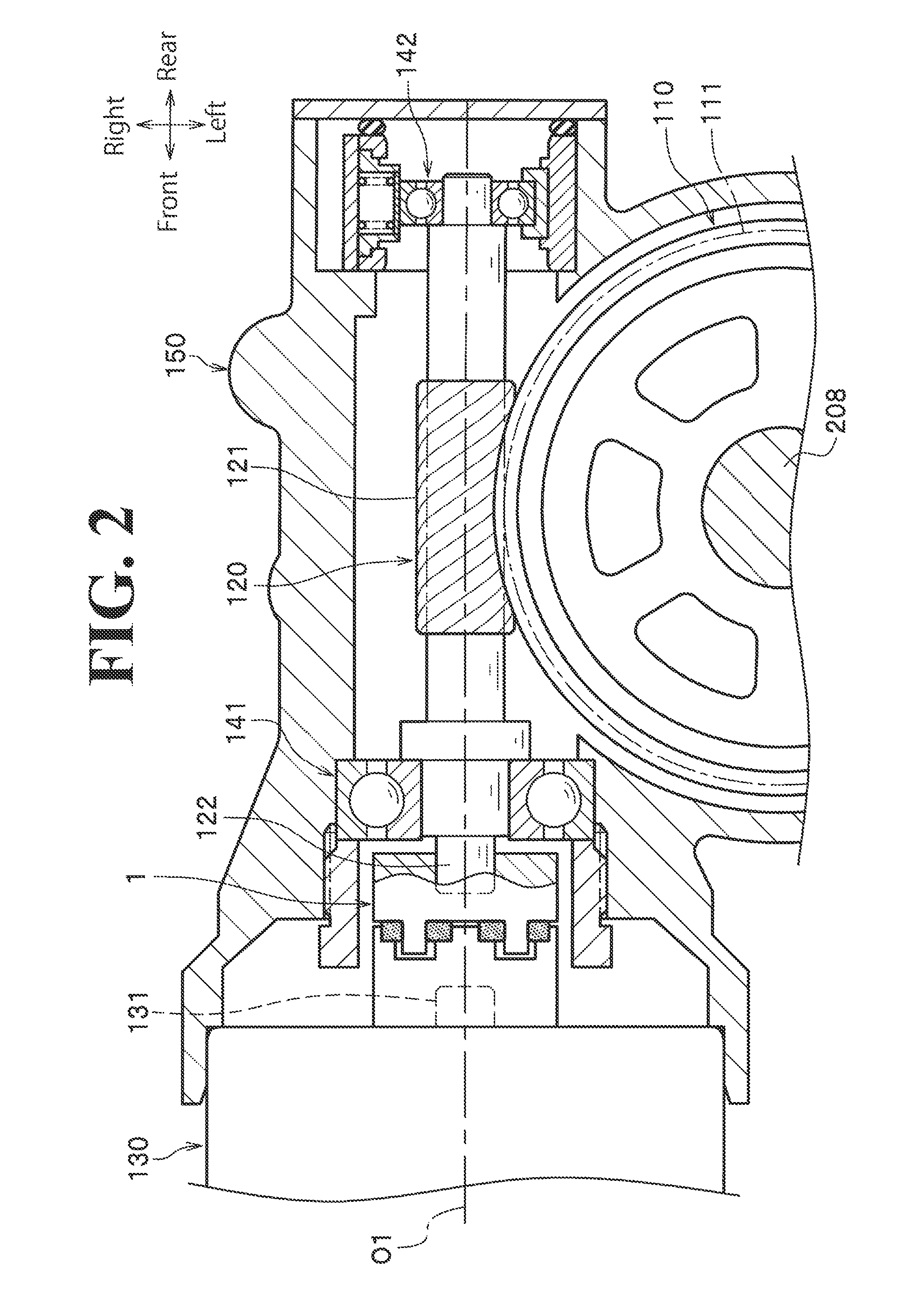Joint structure and power steering device
a joint structure and power steering technology, applied in mechanical devices, couplings, transportation and packaging, etc., can solve the problems of excessive torque and damage to the elastic member, and achieve the effect of high durability
- Summary
- Abstract
- Description
- Claims
- Application Information
AI Technical Summary
Benefits of technology
Problems solved by technology
Method used
Image
Examples
first embodiment
[0038]A first embodiment of the present invention will be described with reference to FIG. 1 to FIG. 8.
[0039]>
[0040]An electric power steering device 200 is of the pinion-assist type, in which assisting force (aid force) is input to a pinion shaft 208.
[0041]The electric power steering device 200 includes: a steering wheel 201, which is operated by a driver; a steering shaft 202 (steering column), which rotates together with the steering wheel 201; an intermediate shaft 204, which is connected to the steering shaft 202 through a first universal joint 203; an input shaft 206, which is connected to the intermediate shaft 204 through a second universal joint 205; a pinion shaft 208, which is connected to the input shaft 206 through a torsion bar 207 and provided with a pinion 208a, which is formed at the lower end of the pinion shaft 208; and a rack shaft 209, which includes a rack 209a, which is engaged with the pinion 208a. Both ends of the rack shaft 209 are connected to front wheels...
second embodiment
[0099]Next, a second embodiment of the present invention will be described with reference to FIG. 9 to FIG. 11. The following description will focus on those respects different from the first embodiment.
[0100]>
[0101]A joint structure 1A according to the second embodiment includes a first engagement member 10A, the second engagement member 20, and an elastic member 30A.
[0102]
[0103]The first engagement member 10A includes the first body 11 and four first engagement claws that extend rearward from the first body 11 and that are disposed at equal intervals in the circumferential direction. Here, for convenience of description, the four first engagement claws will be referred to as a first engagement claw 15A, a first engagement claw 15B, a first engagement claw 15A, and a first engagement claw 15B in the circumferential direction.
[0104]
[0105]A circumferential length (width) of the first engagement claw 15A and the first engagement claw 15B is uniform in the axial direction, instead of b...
third embodiment
[0120]Next, a third embodiment of the present invention will be described with reference to FIG. 12 to FIG. 13. The following description will focus on those respects different from the first embodiment.
[0121]>
[0122]A joint structure 1B according to the third embodiment includes a first engagement member 10B, a second engagement member 20B, and four elastic members 30B.
[0123]
[0124]The first engagement member 10B includes the first body 11 and four first engagement claws 16, which extend from the first body 11 toward the second engagement member 20B. The four first engagement claws 16 are disposed at equal intervals in the circumferential direction.
[0125]
[0126]The second engagement member 20B includes the second body 21 and four second engagement claws 25, which extend from the second body 21 toward the first engagement member 10B. The four second engagement claws 25 are disposed at equal intervals in the circumferential direction.
[0127]
[0128]At an intermediate position in the axial ...
PUM
 Login to View More
Login to View More Abstract
Description
Claims
Application Information
 Login to View More
Login to View More - R&D
- Intellectual Property
- Life Sciences
- Materials
- Tech Scout
- Unparalleled Data Quality
- Higher Quality Content
- 60% Fewer Hallucinations
Browse by: Latest US Patents, China's latest patents, Technical Efficacy Thesaurus, Application Domain, Technology Topic, Popular Technical Reports.
© 2025 PatSnap. All rights reserved.Legal|Privacy policy|Modern Slavery Act Transparency Statement|Sitemap|About US| Contact US: help@patsnap.com



